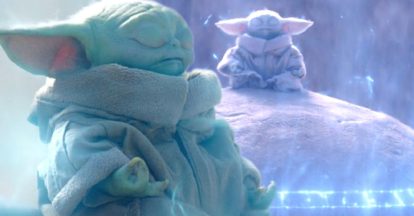

Watching pet videos on TikTok after a long day, taking fashion inspiration from BTS’ pastel coloured two-pieces, obsessing over Baby Yoda and the way he says “patu”, or wearing earrings shaped like Bernie Sanders’ famous mittens (yes, they exist) ─ what connects these seemingly irrelevant behaviors is the power of cuteness to help us cope with the world we live in and strive for a better one.
Cuteness has long been associated with Asian aesthetics, especially with the Japanese concept “kawaii”, from characters like Hello Kitty and Pikachu, to young women’s beauty and fashion – often with lots of pink and frills. Brands that adopt these types of aesthetic in their visual identity used to be reserved for children, teenagers or women with a particular taste of style.
Now, cuteness is a driving force of culture, a global aesthetic movement that we are increasingly seeing across different aspects of our lives: from social media to pop culture, and even some parts of political activism. It has become an alternative mode of communication, a radical form of self-expression even, that challenges authority and liberates us from social norms and stereotypes.
The study of cute can be traced back to Darwin, who proposed that infants possess innate qualities that prompt adults to care for them. Similarly with dogs, scientists suggest that puppies may embody qualities that people consider the cutest at the age when they have the best chance of surviving with human intervention. But its positive outcome, according to today’s behavioral science, is more than our instinct telling us to protect the vulnerable. Seeing something we regard as cute is said to promote careful behavior and narrows our attentional focus, promoting positive emotions and motivations.
One interesting cultural example that captures this is “Cloud Cat Petting”, a Chinese trend where people spend time looking at cats online to just feel better, to mentally squeeze and stroke them as if they were their own pets. The global version of this may be r/Eyebleach, a subbreddit filled with adorable animal images for people to cleanse their eyes and mind, a counter offer to what the Internet often is for us ─ a place you find an exhausting amount of unpleasant, shocking, upsetting things about the society we live in. Cuteness in this sense helps us heal from the fatigue and gives us alternative means and perspective to what we experience on a daily basis.
Another example that shows the positive force of our relationship with cuteness in the context of sociality, is the rise of artists and celebrities who embrace aesthetics outside the traditional expressions of gender, sexuality and age. As mentioned earlier, cute aesthetics have been seen as characteristic of certain type of femininity or juvenility, such as harmlessness and cheerfulness. Artists such as Lil Nas X, Harry Styles and BTS’s disruption of traditional notions of masculinity uses aesthetics typically associated with innocence, femininity and cuteness as a strong statement of self-expression and assertion of self-confidence.
This shift of cuteness from passive to impactful can be seen in Asia too. Whether it’s an illustrated meme commenting on unhealthy societal pressure, or raising awareness around serious issues like global warming, classic cues of cuteness such as soft and colorful illustrations or typography now not only belong in the space of novelty but also where serious dialogues around life and society are taking place.
This cultural phenomenon is an important one for brands to understand. In this new context not only is cuteness a powerful force with positive psychological effects that can be leveraged in branded communication and designs, it now also exists as a universal mode of communication that transcends region, gender and age.
Many brands have already seen the value of cuteness as currency. Pop Mart just celebrated their 10th anniversary of collectibles business and is now worth 7 billion USD. Alibaba uses animal characters to represent their services as an eco-system which they call Alibaba Zoo, and even high fashion brands like Louis Vuitton or Loewe are partnering with beloved animated characters for their luxury items.
These brands are tapping into the power of cuteness through connecting to characters which embody deeper benefits. But we believe within this cultural shift there is opportunity for brands to go beyond the aesthetics of cuteness alone. By exploring the rich nuances which lie within new codes of cuteness brands can harness its potential to convey meaningful, accessible, authentic and even therapeutic values in a culturally resonant and compelling way.